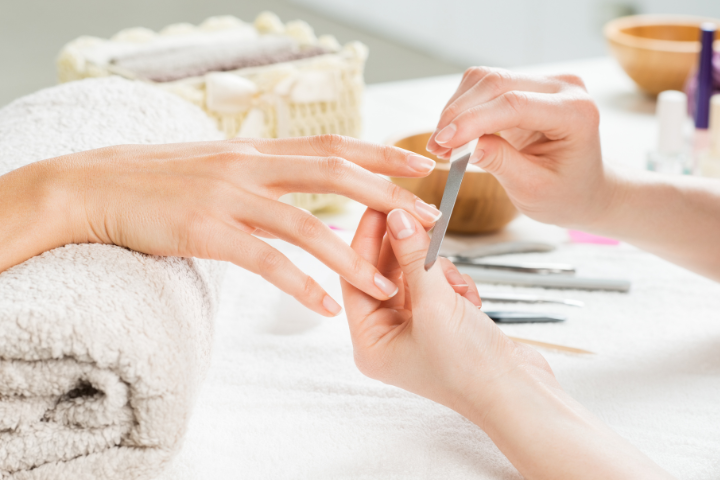Making nail art may seem simple, but the right professional nail tools may be the difference between success and failure. You may be more creative, professional, and efficient at work if you have the correct nail tools.
1. Nail Station & Table Lamp?
It is essential to have a decent workstation as a starting nail specialist. One that is appealing to customers while also meeting your requirements. When shopping for a desk/station, seek for something that is portable and has a secure area to keep your professional nail supplies.
In addition to a suitable workstation, you will want a good table light. Good illumination allows you to view your client's nails more clearly, ensuring that your nail art masterpiece is flawless.
2. Nail File and Buffer?
Nail files and buffers are vital equipment for every nail technician. A nail file aids in the formation of the desired shape of the nail design, which is generally squared or rounded. The nail buffer adds shine to artificial nails and may enhance the appearance of natural nails.Nail files and buffers are must-haves that are also reasonably priced.
3. Do you have a nail drill?
A nail drill is an important requirement; it saves nail technicians time by enabling them to file acrylic nails and remove prior nail enhancements more easily. It is a motorized rotary tool, similar to a Dremel tool, that is available in a variety of sizes and types. Nail drills also come with a variety of nail drill bits that are utilized for unique nail patterns.
It is useful for shaping, backfilling, and cleaning the nail while using artificial nail extensions. The nail drill is ideal for reaching areas that a regular nail file cannot.
4. Acrylics, Gels, and Brushes?
Nail brushes are next on our list. Using the perfect brush for the ideal nail application is critical to ensuring accurate nail shape and the overall appearance of your nail art, making a pair of trustworthy brushes for acrylic and gel manicure applications important.
Acrylic and gel brushes are available in a variety of shapes and sizes based on the nail tech's taste and the client's design. Gel brushes are often thinner and flatter than acrylic brushes and are comprised of nylon. Acrylic brushes are often produced from natural materials such as animal hairs and can withstand contact to acetone, which is commonly used with acrylic nail treatments.
Do you understand the difference between acrylic and gel nail applications?
Acrylic and gels are the most popular nail design applications. Manicures are often performed with acrylic, whereas pedicures are performed using gels.
Acrylic nails are made up of liquid and powder that is applied to your nail using a brush. As a newbie nail technician, you must have acrylic liquid and powder on hand. Following the formation of the acrylic nails, each nail is normally coated with a conventional base coat or may be utilized with an acrylic gel top coat.
A UV light is used to dry gel brushing coatings. Because UV lamps dry instantly, the method is quicker than applying acrylic. The nails seem more natural with gel than with a conventional base coat.
5. What is isopropyl alcohol?
In nail salons, alcohol solutions are used to remove gel polishes. The alcohol solution dissolves the gel nail's sticky covering and restores it to normal.
6. Acetone?
Acetone is one of the most important tools used by nail technicians on a regular basis, and it has several applications in a manicure salon. The removal of nail polish is the most evident advantage. It is also used as a soak to remove acrylic nails and to clean the acrylic nail application brushes.
7. Base and top coat nail polishes?
Nail professionals employ base and top coat nail paints to offer long-lasting manicures and pedicures. A base coat will keep the natural nails from yellowing. A top coat will polish the nail and keep it from peeling. A base and top coat will also improve the quality of your job, giving you greater customer happiness.
8. What about cuticle oil?
Cuticle oil is applied to the nails to nourish and moisturize them. Nail technicians often apply cuticle oil after painting the nails to help the lacquer remain longer and shine better. Regularly applying cuticle oil promotes blood circulation around your nails. It also aids in nail development, resulting in stronger and faster-growing nails.











